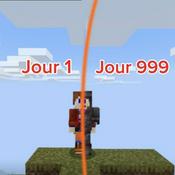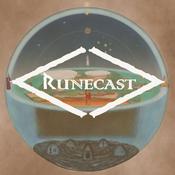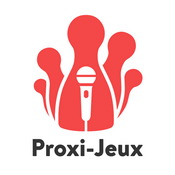Épisodes disponibles
5 sur 184
- Your validation passed. Your players hated it. Here’s why. | MAG #10Most game studios either skip validation entirely or waste hundreds of thousands on academic testing that doesn't move the needle. Both approaches kill products.In this episode, we discuss why product validation is the difference between success and years of wasted development—and introduces two frameworks to fix your process.You'll discover:The Pyramid Decision Model: When to trust tastemaker vision vs. player dataWhy the "wrong tastemaker problem" is your biggest invisible risk5 critical validation failures (and how to avoid each one)The signal vs. noise problem: When player feedback actually hurts your gameStage-specific validation: Pre-production → Production → Soft Launch → Hard LaunchWhy expensive user motivation studies and persona research rarely workThis matters if:Your team debates "vision" vs. "data-driven" design endlesslyYou've hired consultants who delivered fancy reports but no resultsYour validation tests keep pointing in different directionsYou're burning runway without knowing if your core concept worksYou need a framework to match methodology to development stageThe uncomfortable truth: It's nearly impossible to evaluate a "right tastemaker" without historical success—and even then, they might fail in a new genre. Meanwhile, over-intellectualized academic approaches sound impressive but rarely translate to product gains.Bottom line: Product velocity = speed × direction. Validation should steer your direction, not justify executive forecasts or create someone to blame. This episode gives you the frameworks to validate what matters, when it matters.Read the full breakdown with detailed frameworks:https://www.gamemakers.com/p/your-validation-passed-your-playersTimestamps:(00:00:00) Why This Might Be the Most Important Topic Yet(00:01:07) The Two Extremes: No Testing vs. Testing Theater(00:05:28) The Pyramid Decision Model: Top vs. Bottom(00:09:52) Problem #1: The Wrong Tastemaker Problem(00:12:08) Problem #2: Validation Tests Are Often Flawed(00:14:08) Problem #3: Over-Intellectualization (Why Academic Models Fail)(00:17:14) Problem #4: Misinterpreting Validation Results(00:20:02) Problem #5: The Signal vs. Noise Problem(00:22:17) The What, When, and How Framework by Development Stage(00:25:33) Final Thoughts: Why This Is Really, Really Hard#gamedev #productvalidation #gamedevelopment #productmanagement #gamedevelopmenttips--------27:54
- Your Analytics Stack Is Killing Your Studio (The New Meta: PostHog FTW)Most game studios waste weeks of runway on the wrong analytics decision—here's how to avoid that mistake.Traditional analytics SDK vendors like Amplitude, Mixpanel, and Braze promise plug-and-play simplicity but deliver silent failures, contract negotiations, and escalating costs that can destroy startup velocity. In this episode, we discuss why the old analytics playbook is obsolete in 2025—and reveals the new meta that's eating market share.You'll discover:Why SDK analytics vendors fail silently (and cost you weeks of bad data)The contract negotiation trap that delays launches by 6+ weeks5 analytics infrastructure options compared (real costs, hidden tradeoffs)Why PostHog is the new standard for studios under 500K MAUHow the right stack can improve dev velocity by 30%+ and cut costs 40-50%This matters if:You're choosing analytics infrastructure for a new gameYour current solution is slowing down iteration speedYou're tired of waiting hours for batched event dataYou want warehouse-native architecture without enterprise costsBottom line: Your analytics decision could mean the difference between product-market fit and running out of runway. For small to mid-sized game studios, PostHog combines enterprise-grade power with pay-as-you-go pricing—no contracts, no traffic forecasting, no silent failures.Read the full breakdown with technical details, pricing tables, and implementation guides: https://www.gamemakers.com/p/the-new-meta-for-game-analytics-saveTimestamps (Episode Chapters):(00:00:00) The Studio-Killing Problem You're Ignoring(00:01:26) The "Silent Failure" Trap (How SDKs Hide Bugs)(00:02:41) How 15-Minute Data Delays Destroy QA Velocity(00:06:02) The Obsolete 3-Tier Analytics Model (and Why It's Broken)(00:10:38) The 6-Week Contract Negotiation Trap(00:14:16) The "Nostradamus" Forecasting Problem: Why You Always Overpay(00:16:19) Option 1: Traditional SDKs (Amplitude, Mixpanel)(00:25:32) Option 2: Firebase + BigQuery(00:28:34) Option 3: Unity Analytics(00:30:21) Option 4: The New Meta (PostHog)(00:36:14) Option 5: The Enterprise Trap (Snowflake)(00:39:01) Integrated (Braze) vs. Best-of-Breed (PostHog + CRM)(00:42:56) The Final Verdict: What to Choose By Studio Size--------46:18
- Why Game Studio Failures Are Structure Problems, Not Talent Problems | Chris Casanova (Microsoft, Mojang, Relic, Hypixel)Most game studios think they have a talent problem. They don't. They have a structure problem.Chris Casanova spent 15+ years as a producer across Microsoft Xbox, Mojang (Minecraft), Relic Entertainment, Offworld Industries, and Hypixel Studios. He's watched talented teams fail repeatedly—not from lack of skill, but from organizational friction.Traditional studios organize around craft silos: design departments, engineering departments, art departments. Every feature requires handoffs. Every handoff loses fidelity. The result? Friction, misalignment, wasted iteration, and missed deadlines.Chris reveals the alternative: cross-functional outcome teams of 5-9 people who own their results from concept to ship.━━━━━━━━━━━━━━━━━━━━TIMESTAMPS━━━━━━━━━━━━━━━━━━━━00:00 - Chris's background: Xbox, Mojang, Relic02:59 - Why he wrote "Structure Teams to Win"06:54 - The problem with craft-based teams08:17 - Outcome teams: The procedural worlds example18:32 - Why 5-9 people is optimal team size24:10 - Three organizational layers explained31:48 - When leaders resist change42:20 - The political reality of reorganization47:15 - Case study: 70-person AA co-op shooter58:07 - Advice for small teams (10 people)01:01:06 - How to connect with Chris━━━━━━━━━━━━━━━━━━━━KEY INSIGHTS━━━━━━━━━━━━━━━━━━━━THE PROBLEMS:- Design creates specs without context → over-engineered solutions- Art produces assets without validation → endless iteration- QA receives unclear requirements → irrelevant bug reports- Every handoff loses the original intentTHE SOLUTION:Cross-functional teams of 5-9 people with:→ Mixed disciplines (designers, engineers, artists, QA embedded)→ Clear mission and measurable KPIs→ Everything needed to own their outcome→ Minimal handoffs, maximum collaborationREAL EXAMPLE:Procedural worlds team mission: "Every world seed feels fresh, readable, performant"KPI: Biome novelty per minuteTeam: Generation engineers, world designers, environment artists, technical artists, QA━━━━━━━━━━━━━━━━━━━━70-PERSON STUDIO STRUCTURE━━━━━━━━━━━━━━━━━━━━Chris provides detailed org structure for AA co-op shooter:- Combat & Gameplay (15 people, 2 teams)- Progression & Economy (10 people, 2 teams)- Social & Co-Op (12 people, 2 teams)- Content & Live Ops (15 people, 2 teams)- World & Narrative (10 people, 1 team)- Technical Foundation (8 people, 1 team)Each team has 5-9 people with mixed disciplines focused on specific outcomes.━━━━━━━━━━━━━━━━━━━━THE HARD TRUTHS━━━━━━━━━━━━━━━━━━━━Some leaders won't make the transition from managing 30 people to being on a team of 8. They'll resist or self-select out. And that's okay—holding onto territorial structures to preserve egos is how studios fail."If you have a C-suite that's divided, you're not going to be able to make this change. You need unified leadership."━━━━━━━━━━━━━━━━━━━━RESOURCES MENTIONED━━━━━━━━━━━━━━━━━━━━- "Team of Teams" by Gen. Stanley McChrystal- "Extreme Ownership" by Jocko Willink- "Structure Teams to Win" (Chris's Medium article)━━━━━━━━━━━━━━━━━━━━CONNECT WITH CHRIS━━━━━━━━━━━━━━━━━━━━Chris is seeking his next production leadership role.LinkedIn: https://www.linkedin.com/in/chris-casanova/Email: [email protected]: https://medium.com/@chris.casanova/structure-teams-to-win-15d98e65c5d7━━━━━━━━━━━━━━━━━━━━READ THE FULL BREAKDOWN━━━━━━━━━━━━━━━━━━━━Detailed newsletter post with implementation templates and additional examples:https://www.gamemakers.com/p/why-your-game-studios-organizational━━━━━━━━━━━━━━━━━━━━Gamemakers podcast: Gaming business insights for developers, executives, and investors. Hosted by Joseph Kim. New episodes weekly.#gamedev #productmanagement #teamstructure #leadership--------55:21
- The Battlefield 6 Redemption, What UCLA Football Teaches About Leadership, & Structuring Teams to Win | MAG #7Western AAA development is not dead. Battlefield 6's 7 million unit launch proves it. This episode deconstructs how EA and Vince Zampella reversed the "disaster" of Battlefield 2042 by focusing on leadership, community feedback , and a smarter studio structure.Then, we explore why leadership is the ultimate "alpha". Joseph Kim breaks down the stunning turnaround of the UCLA football team—who went from a 0-4 disaster to a 3-0 winning streak (including beating #7 Penn State ) with the exact same players. The only thing that changed? Leadership and strategy. Learn how to apply these lessons on accountability , clear roles , and scheme-to-personnel fit to your game studio.Finally, we feature an excerpt from an interview with veteran producer Chris Casanova on why your studio is likely structured for failure. He explains the critical shift from "craft-based" (siloed) teams to cross-disciplinary "outcome-based" teams and how to implement it.Timestamps:[00:00:20] Today's Topics: Battlefield 6, UCLA Leadership, & Team Structures [00:01:51] Corrections: Revisiting the EA/PIF Deal & The "Copy, Improve, Innovate" Framework [00:04:33] Top 3 News: Battlefield 6 (7M copies) , Switch 2 Production , Arc Raiders CCU [00:06:42] MACRO: The Battlefield 6 Redemption Story [00:07:41] By the Numbers: BF6 (7M units) vs 2042 (4.2M) [00:09:19] A Quick History of the Battlefield Franchise [00:11:12] What Changed? The "Save the Franchise" Game [00:13:01] Fix #1: A Better Studio Coalition Structure [00:15:05] Fix #2: Going Back to Basics & Listening to the Community [00:16:14] Fix #3: Polish and Giving the Game Time [00:17:53] Fix #4: The Vince Zampella Factor [00:20:40] Deep Dive: Who is Vince Zampella? (Infinity Ward, Respawn) [00:28:22] ALPHA: Leadership is Your Biggest Competitive Advantage [00:31:18] Case Study: The UCLA Football Turnaround [00:32:15] The 0-4 Disaster (The Problem) [00:37:31] The Mid-Season Fix: Firing the Coach [00:39:10] The 3-0 Turnaround (The Result) [00:41:03] The Lessons: 1) Play to Strengths, 2) Accountability, 3) Clear Roles, 4) Belief [00:44:47] Applying the Lessons to Your Game Studio [00:48:55] GAME DEV: Interview with Chris Casanova [00:49:41] The Thesis: Shifting from "Craft-Based" to "Outcome-Based" Teams [00:52:43] A Practical Example: A "Procedural Worlds" Team [00:57:51] Key Takeaway: Why Outcome-Based Teams Win--------59:16
- Inside the $55B EA-Saudi Deal: Why It's Not a Typical LBO (with Chris Petrovic & Matthew Kanterman)Saudi Arabia's Public Investment Fund just closed the largest gaming acquisition in history—$55 billion for Electronic Arts. But this isn't the typical private equity playbook.In this episode, host Joseph Kim sits down with two M&A experts who break down what's really happening:- Chris Petrovic - Board Chairman & CBO at FunPlus, former President of Publishing at Zynga where he orchestrated their transformative acquisition strategy- Matthew Kanterman, CFA - Gaming industry analyst specializing in M&A and financial analysisWe uncover the hidden truths behind the deal:→ Why EA's "operational bloat" narrative is based on an accounting myth→ The real reason EA chose to sell now (hostile takeovers? portfolio pressure?)→ Why Silver Lake's involvement is primarily "for optics"→ What "patient capital" means for EA's studios and the broader gaming industry→ The mobile strategy question: Will EA and Scopely actually integrate?→ Growth opportunities in sports, Asia, and transmedia→ Who really controls gaming's attention economy nowThis isn't about short-term cost-cutting. It's about sovereign wealth rewriting the rules of gaming M&A—and what that means for developers, studios, and the industry's future.Key Takeaways:- At 17-18x forward EBITDA, EA sold at a discount to Activision's 20x—why?- With Take-Two now the only major independent US publisher, what happens to exit opportunities?- EA's conservative accounting makes them look less efficient than they actually are- This deal is measured in decades, not the typical 5-7 year PE timeline📬 Subscribe to Gamemakers Newsletter:https://www.gamemakers.com/🔗 Connect with our guests:Matthew Kanterman: linkedin.com/in/matthew-kanterman-cfa-b6345133Chris Petrovic: linkedin.com/in/chrispetrovic🎧 More episodes: https://open.spotify.com/show/4FdVLkx3msRFsqsEVA1vp0?si=b5192182dc6b4e52#gaming #mergers #acquisitions #ea #saudiarabia #gamedev #podcast--------59:56
Plus de podcasts Loisirs
Podcasts tendance de Loisirs
À propos de GameMakers
The GameMakers podcast publishes current, entertaining, and in-depth discussions on F2P game development. Topics that we cover include the business of games, F2P monetization, liveops, game design, game development processes, team structure, and more.
Site web du podcastÉcoutez GameMakers, ORIGAMI L'Hebdo ou d'autres podcasts du monde entier - avec l'app de radio.fr

Obtenez l’app radio.fr gratuite
- Ajout de radios et podcasts en favoris
- Diffusion via Wi-Fi ou Bluetooth
- Carplay & Android Auto compatibles
- Et encore plus de fonctionnalités
Obtenez l’app radio.fr gratuite
- Ajout de radios et podcasts en favoris
- Diffusion via Wi-Fi ou Bluetooth
- Carplay & Android Auto compatibles
- Et encore plus de fonctionnalités


GameMakers
Scannez le code,
Téléchargez l’app,
Écoutez.
Téléchargez l’app,
Écoutez.




































